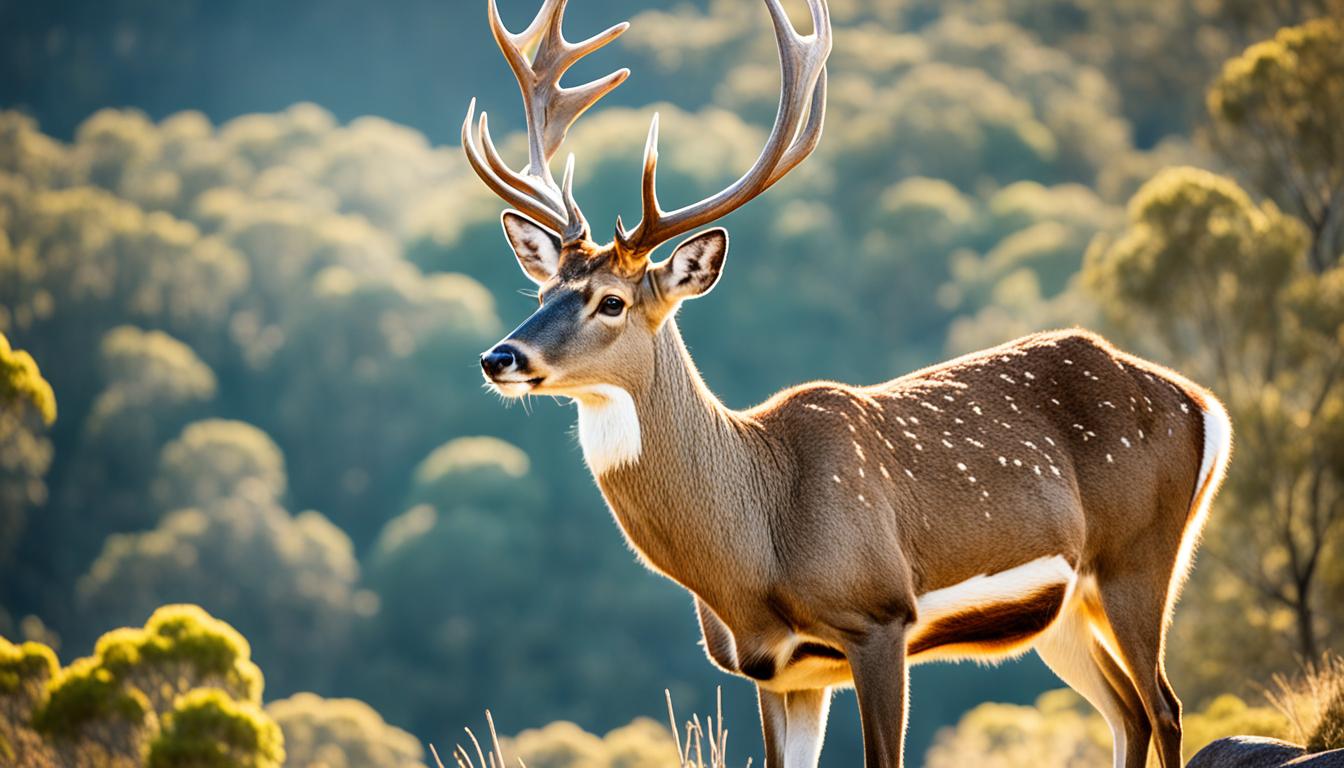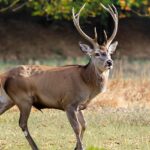Australia, known for its diverse wildlife, is home to a variety of deer species that have established wild populations across the country. These majestic creatures were introduced to Australia in the 1800s by Acclimatisation Societies, Hunt Clubs, and private individuals, and have since adapted to thrive in various habitats.
Six species of deer can be found in Australia: sambar, red deer, rusa deer, fallow deer, chital, and hog deer. Each species has its own unique characteristics and habitat preferences, allowing them to occupy a wide range of ecosystems, including temperate forests, montane and arid woodlands, grasslands, tropical savanna, and rainforests.
Deer populations in Australia are on the rise, and they can now be found in every state and territory. Their distributions are influenced by historical locations of liberation and accidental farm escapes. As a result, deer have the potential to occupy vast areas in Australia, including the arid interior and northern regions.
It is fascinating to explore the existence and insights into the species of deer in Australia, shedding light on the unique challenges and opportunities they present for the country’s biodiversity.
Content Highlights
ToggleKey Takeaways
- Australia is home to six species of deer, including sambar, red deer, rusa deer, fallow deer, chital, and hog deer.
- Deer populations in Australia have established wild populations in various habitats across the country.
- The distribution of deer in Australia is influenced by historical locations of liberation and accidental farm escapes.
- Deer populations in Australia are increasing and can be found in every state and territory.
- Understanding the habitat preferences and behavior patterns of different deer species is important for effective management and conservation efforts.
Deer Species and Their Environments
The diverse deer species in Australia have distinct habitat requirements dictated by their evolutionary characteristics and behavior patterns. Understanding these preferences is crucial for spotting deer in the wild and formulating effective management strategies.
The hog deer, for instance, thrives in the tall, moist grasslands of northern India. Its body shape is uniquely adapted for navigating dense grass, enabling it to move effortlessly through its preferred habitat. On the other hand, the fallow deer prefers the fringes of farmland and forests, utilizing its acute vision to spot potential threats from afar.
Deer species with European origins, such as the red deer and fallow deer, have adjusted their breeding seasons to account for the six-month difference between the northern and southern hemispheres. This adaptation ensures their reproductive cycles align with the seasonal changes of their adopted home in Australia.
Asiatic deer species like the sambar, rusa, and chital deer exhibit more irregular breeding seasons. This variability emphasizes the importance of understanding the specific behaviors and preferences of each species to efficiently manage populations.
The Different Deer Species in Australia
| Deer Species | Habitat Preferences | Breeding Seasons |
|---|---|---|
| Hog deer | Tall, moist grasslands in northern India | Varies |
| Fallow deer | Fringes of farmland and forests | Adapted to the seasonal differences between northern and southern hemispheres |
| Red deer | Open woodland and grassy areas | Adapted to the seasonal differences between northern and southern hemispheres |
| Sambar deer | Thick forest areas with dense undergrowth | Varies |
| Rusa deer | Open forests and grassy areas | Varies |
| Chital deer | Open woodlands, grasslands, and dense forests | Varies |
By recognizing the habitat preferences and breeding behaviors of different deer species, wildlife enthusiasts, conservationists, and management authorities can enhance their knowledge of deer sightings in Australia and implement successful approaches to population control and preservation.
Impacts and Management of Wild Deer in Australia
Wild deer in Australia have both positive and negative impacts on the environment. On the positive side, deer hunting provides economic benefits and recreational opportunities for hunters. However, their overabundance can lead to detrimental effects on natural and agricultural ecosystems.
Deer foraging can result in direct physical impacts on native flora and crops. Their feeding behavior often leads to the destruction of vegetation, which affects the flora and fauna that depend on it. Additionally, deer can compete with native fauna and livestock for resources such as food and water, potentially disrupting local ecosystems and agricultural practices.
Furthermore, wild deer can transmit diseases and parasites to other animals, including livestock. This poses a threat to the health and well-being of both domestic and wild animal populations, with potential economic and ecological consequences.
In Australia, the management of wild deer is an important and complex issue. The legal status of deer varies across jurisdictions, leading to conflicts in how they are viewed. Some consider them a valuable resource for hunting and recreational purposes, while others view them as a pest that threatens native biodiversity and agricultural productivity.
Sustainable coexistence with deer requires a comprehensive understanding of their interactions with ecosystems and the development of effective management strategies. This includes implementing measures to control deer populations, such as hunting programs and culling operations, as well as promoting responsible hunting practices.
Additionally, education and awareness campaigns can help raise public understanding of the impacts of wild deer and the importance of their management. Collaboration between government agencies, landowners, conservation organizations, and hunters is crucial in developing and implementing effective deer management plans across Australia.
In summary, the presence of wild deer in Australia has both positive and negative consequences. While deer hunting provides economic benefits and recreational opportunities, their overabundance can have detrimental effects on natural and agricultural ecosystems. Through informed management strategies and collaborative efforts, Australia can strive for a sustainable balance that supports deer conservation while minimizing their negative impacts on the environment.
Conclusion
Deer have become established and invasive in various habitats in Australia. The country is now home to six introduced deer species, namely sambar, red deer, rusa deer, fallow deer, chital, and hog deer, which have formed wild populations throughout the country. The distributions of these deer species are primarily influenced by historical releases and accidental escapes, resulting in their wide presence across Australia.
As deer populations continue to increase, their overabundance poses negative impacts on the environment. Effective management strategies are therefore essential to mitigate these detrimental effects. Understanding the habitat preferences and behavior patterns of different deer species plays a crucial role in managing their populations and minimizing environmental damage.
By implementing sustainable management approaches, Australia can achieve a balance between the coexistence of wild deer and the preservation of its ecosystems and agricultural resources. It is important to prioritize conservation efforts to ensure the long-term health and sustainability of Australian habitats.
- California Deer Hunting Guide: Seasons, Rules, Permits, and More - 26 June 2024
- Arkansas Deer Season 2024 [Schedules, Licenses, Bag Limits & More!] - 26 June 2024
- 2024 Arizona Deer Season New Dates & Rules! - 25 June 2024




